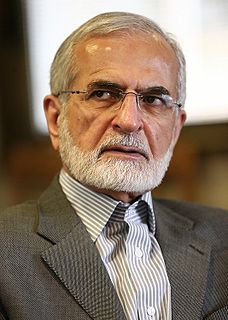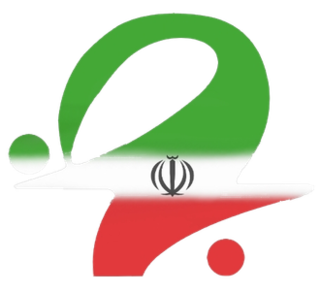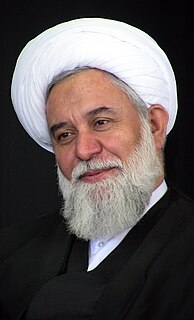This page is based on this
Wikipedia article Text is available under the
CC BY-SA 4.0 license; additional terms may apply.
Images, videos and audio are available under their respective licenses.

University of Tehran is the oldest modern university located in Tehran, Iran. It is also one of the most prestigious universities in the Middle East. Based on its historical, socio-cultural, and political pedigree, as well as its research and teaching profile, UT has been nicknamed "The mother university of Iran". It has been ranked as one of the best universities in the Middle East in national and international rankings and among the top universities in the world. It is also the premier knowledge producing institute among all OIC countries. The university offers 111 bachelor's degree programs, 177 master's degree programs, and 156 Ph.D. programs. Many of the departments were absorbed into the University of Tehran from the Dar al-Funun established in 1851 and the Tehran School of Political Sciences established in 1899.

Seyed Kamal Kharazi is an Iranian reformist politician and diplomat who was the Minister of Foreign Affairs from 20 August 1997 to 24 August 2005 as appointed by President Mohammad Khatami serving for eight years. He was replaced by Manouchehr Mottaki who was appointed by the next President Mahmoud Ahmadinejad.

The Cairo Conference of November 22–26, 1943, held in Cairo, Egypt, outlined the Allied position against Japan during World War II and made decisions about postwar Asia.

Tehran Imam Khomeini International Airport, is the primary international airport of Tehran, the capital city of Iran, located 30 kilometers southwest of Tehran, near the localities of Robat Karim and Eslamshahr and spread over an area of 13,500 hectares of land. Along with Mehrabad International Airport, Imam Khomeini Airport is one of the two international airports serving Tehran. All International flights in Tehran are currently served by this airport and all domestic flights are served by Mehrabad Airport. the airport has served about 9 million international passengers. It ranked 3rd in terms of total passenger traffic in Iran after Tehran Mehrabad Airport and Mashhad Airport. The airport is operated by the Iran Airports Company and is one of the home base of Iran's international airlines, Iran Air, Mahan Air and some other.

Mohammad-Ali Ramin is an Iranian politician, political analyst and writer who served as the Vice Minister of Culture and a presidential advisor under President Mahmoud Ahmadinejad. He is known for organising the International Conference to Review the Global Vision of the Holocaust which took place in Tehran in 2006.

Tehran has grown dramatically since Mohammad Khan Qajar chose it as the capital of the Qajar dynasty in 1796. Despite the occurrence of earthquakes during the Qajar period and before, some buildings still remain from Tehran's era of antiquity. However, most of Tehran's historic architecture has been obliterated by the wave of hasty modernization that swept through the capital over the last 40 to 50 years. Of the eight city gates of old Tehran, none remain today.

The Iran national baseball team is the national baseball team of Iran. The team represents Iran in international competitions.

The Islamic Labor Party is a reformist party in Iran and splinter group to the trade union Worker House.
The Tehran Communiqué, also known as the Joint statement of the heads of state in Tehran is the joint communiqué mediated by Iranian President, Akbar Hashemi Rafsanjani and signed by the acting President of Azerbaijan, Yagub Mammadov and President of Armenia, Levon Ter-Petrossian on May 7, 1992 with an intention to end the four-year-long hostilities between Armenia and Azerbaijan over the Nagorno-Karabakh region, a former autonomous oblast of the Azerbaijan SSR.
Events in the year 2010 in the Islamic Republic of Iran.
The following is a timeline of the history of the city of Tehran, Iran.

The 16th Summit of the Non-Aligned Movement was held from 26 to 31 August 2012 in Tehran, Iran. The summit was attended by leaders of 120 countries, including 24 presidents, 3 kings, 8 prime ministers and 50 foreign ministers.
The International Conference on Hollywoodism, sometimes known as the Conference on Hollywoodism and Cinema, is a conference held on several occasions in the early 2010s and organized by the government of Iran. By its own description, it "host[s] filmmakers, scholars and activists from around the world to discuss different aspects of world cinema as they relate to human ideals on one hand and the realities of Hollywood on the other." In particular, the conference served to criticize the United States film industry's portrayals of Islam and Iran. It took place in Tehran in February each year, coincident to and within the framework of the Fajr International Film Festival.

Ali Akbar Rashad is an Iranian philosopher and Islamic scholar who pioneered the Ibtina Theory, a theory for explaining the process and mechanism of "religious knowledge" formation.
Hamid Notghi was an Iranian poet, writer, author, university professor. Notghi Founder and father of modern public relations in Iran.










